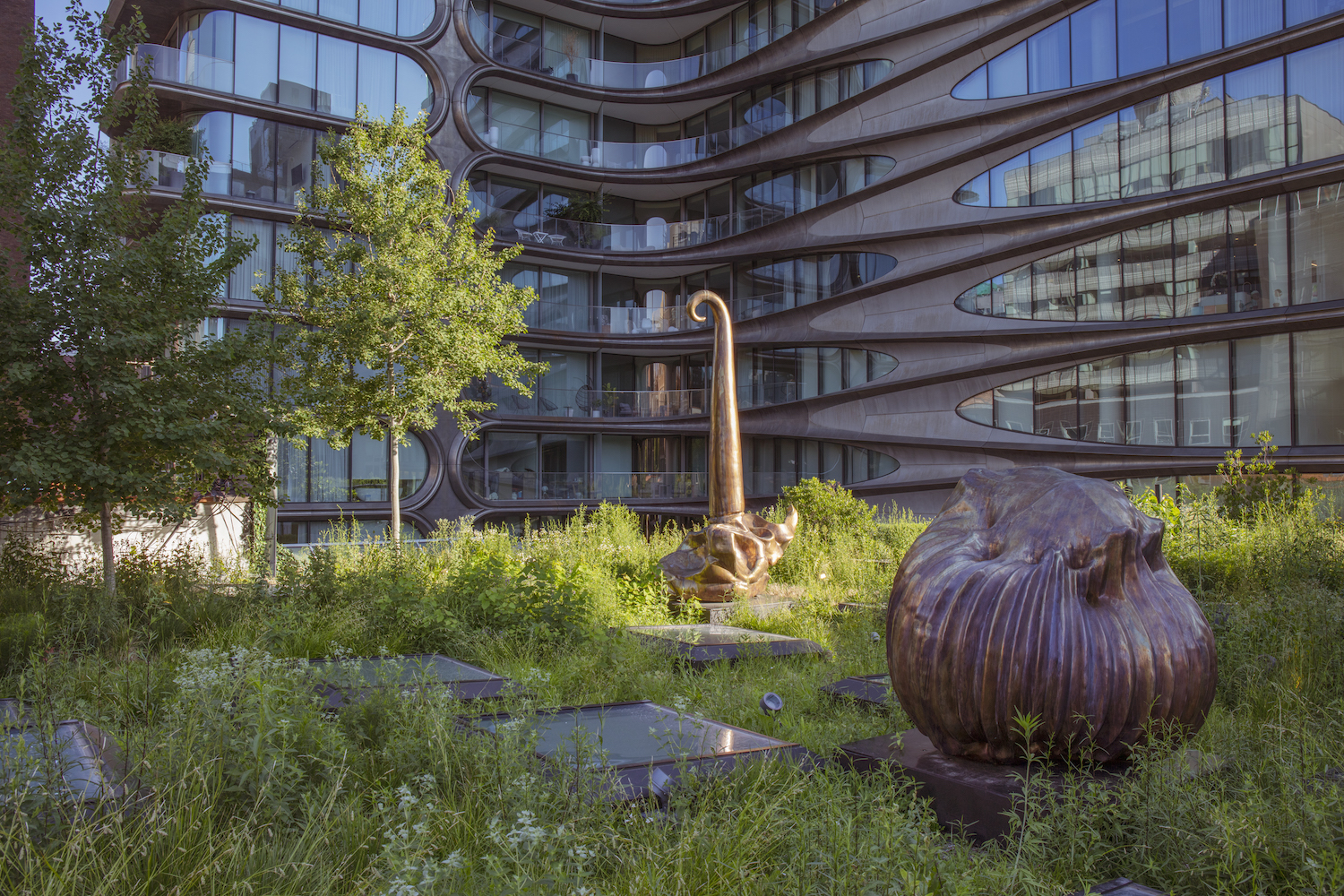
The narrative around self-taught artist Alma Allen’s output always skews towards the trope of the outsider, yet in multiple interviews he has waved away these mythological origins, citing a visit to Constantin Brancusi’s bronzes as a life-changing experience that has continued to form the basis of his practice. Looking at Allen’s latest exhibition on the roof of Kasmin Gallery in New York, who could speak about the work without nodding to masters like Brancusi, much less the city’s grand lineage of modern public sculpture and that sweet spot between minimalism and figuration that came to define it? Staring out over his first outdoor-sized sculptures from the industrial beams of the High Line, I thought about Alexander Calder, Richard Serra and the Carol Bove sculptures that now flank the steps of the Metropolitan Museum of Art. This is the dialogue that Allen belongs within—one that acknowledges the artist’s grappling with the untamable behemoths of shape, light and scale within the formal context of contemporary life and its architecture.

Previous profiles of Allen’s work focus on the importance of his process. They lead with descriptions of the instinctive thumbprints he leaves on fist-scaled forms, which are then reborn as giants with the help of the his CNC robot or a foundry. A New York Times piece reports that Allen first started selling his handheld sculptures in SoHo off an antique ironing board, catching the attention of the glamorous tastemakers (Issey Miyake, Murray Moss and Todd Oldham) that used to haunt—and sometimes still do—this pebbled belch of New York. They then tell the story of how his materials and scale became grander with age as Allen amassed resources to begin buying his marble block rather than appropriating them from city curbs. They recall the underdog story like an athletic movie montage, tracking Allen’s moves up the ladder from streetside stand to boutique floor to the hallowed white cube where they leave his legacy in a kind of limbo. Here, in the shadow of the Whitney Biennial and his museum acquisitions, Allen is at once crowned a member of the living establishment yet simultaneously made an exception as a case of the periphery turned inside out. The narrative he’s held up on doesn’t fit the truth: over the decades, Allen has matured into an iconoclast with a strong foothold in both academia and the commercial world.
Trapped in a state of betweenness, the artist at least has his pieces to keep him company, as critic Douglas Fogle describes in his 2016 catalogue essay, “Hooked on a Feeling.” In Fogle’s words, Allen’s work seems to exist “slightly outside of space and time,” “both inside and outside of the art world” and “in a Heienbergian state of uncertainty.”

There is certainly a movement to the sculptures. They take on an almost animative quality rather than a dimensional one. I imagine that the biomorphic idioms that Allen has continually plumed over the years are taking on a life of their own at Kasmin’s current exhibition—slouching ever closer to the cusp of representation and thereby a brand of realness. In the garden, pareidolia sends forth the images of a snail, a fruit and a shoot of green. Downstairs in the gallery, I see an infant, a mushroom and another bug. Now I am forced to wonder if these characters are Allen’s or my own interior ramblings coming to fruition. In either case, they are really shiny; the most overwhelming command that comes to mind is, “do not touch, do not touch, do not touch.” I want to, though. I wonder if they’d feel cold like the inanimate works they are or warm like the materials and creatures they portray. Does this collapse ever scare Allen in the studio like Frankenstein’s monster did?
I learned Allen is a father so either way he knows the truth now. There is something pushing the sculptures closer to the surface of abstraction; we can just make out the shark under the waves. If Brancusi is dubbed the patriarch of modern sculpture, then perhaps Allen can be welcomed as the dad of today, the man whose instinctual fidget and open-armed persistence helped him keep the accelerating tempo of evolution alive in his hands.
Craving more culture? Sign up to receive the Cultured newsletter, a biweekly guide to what’s new and what’s next in art, architecture, design and more.




